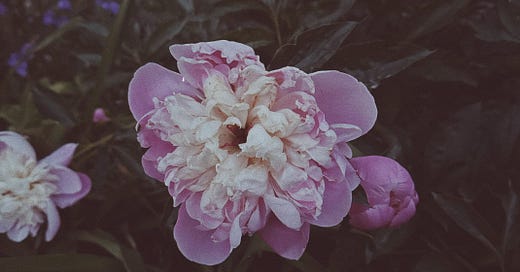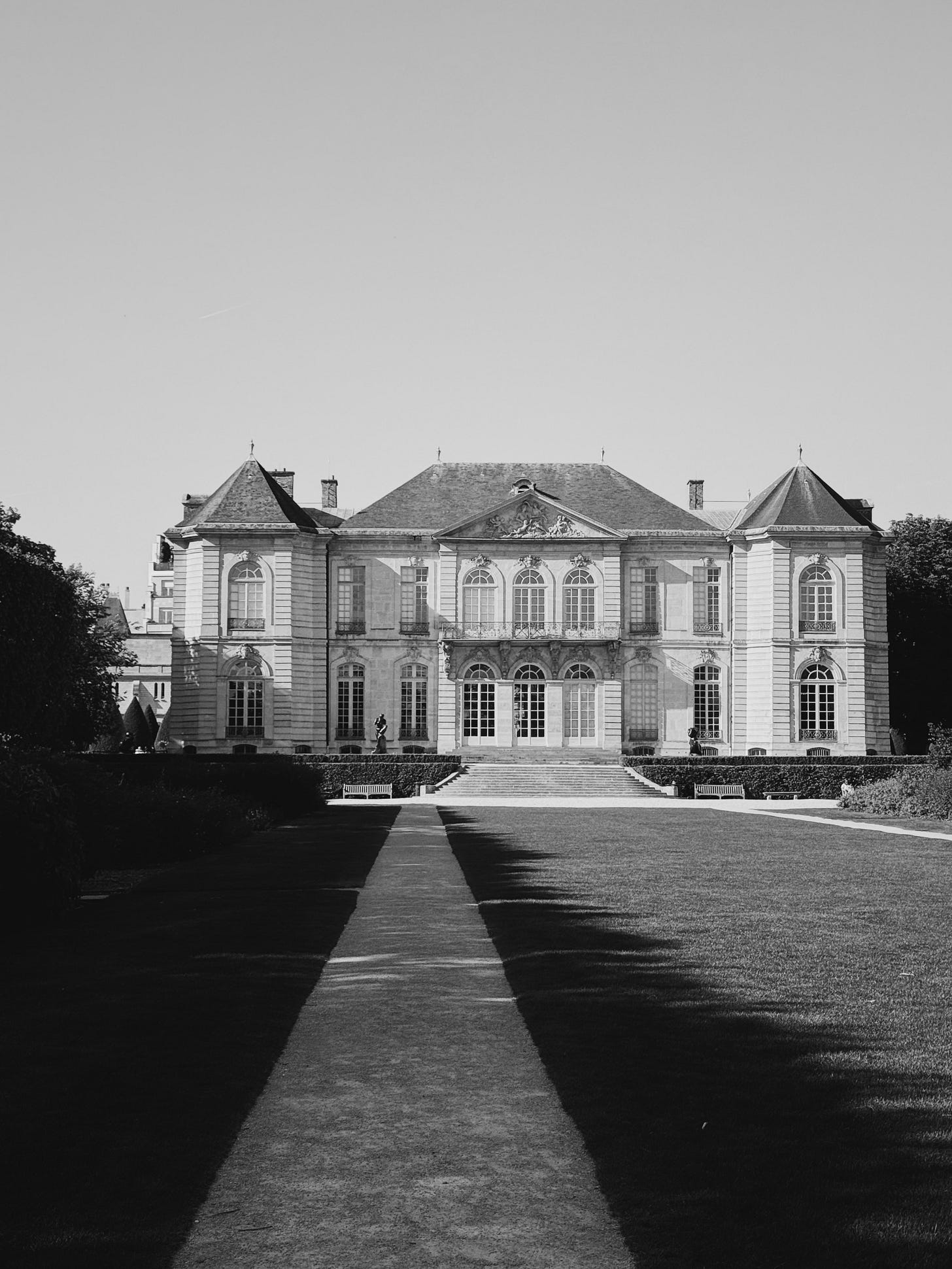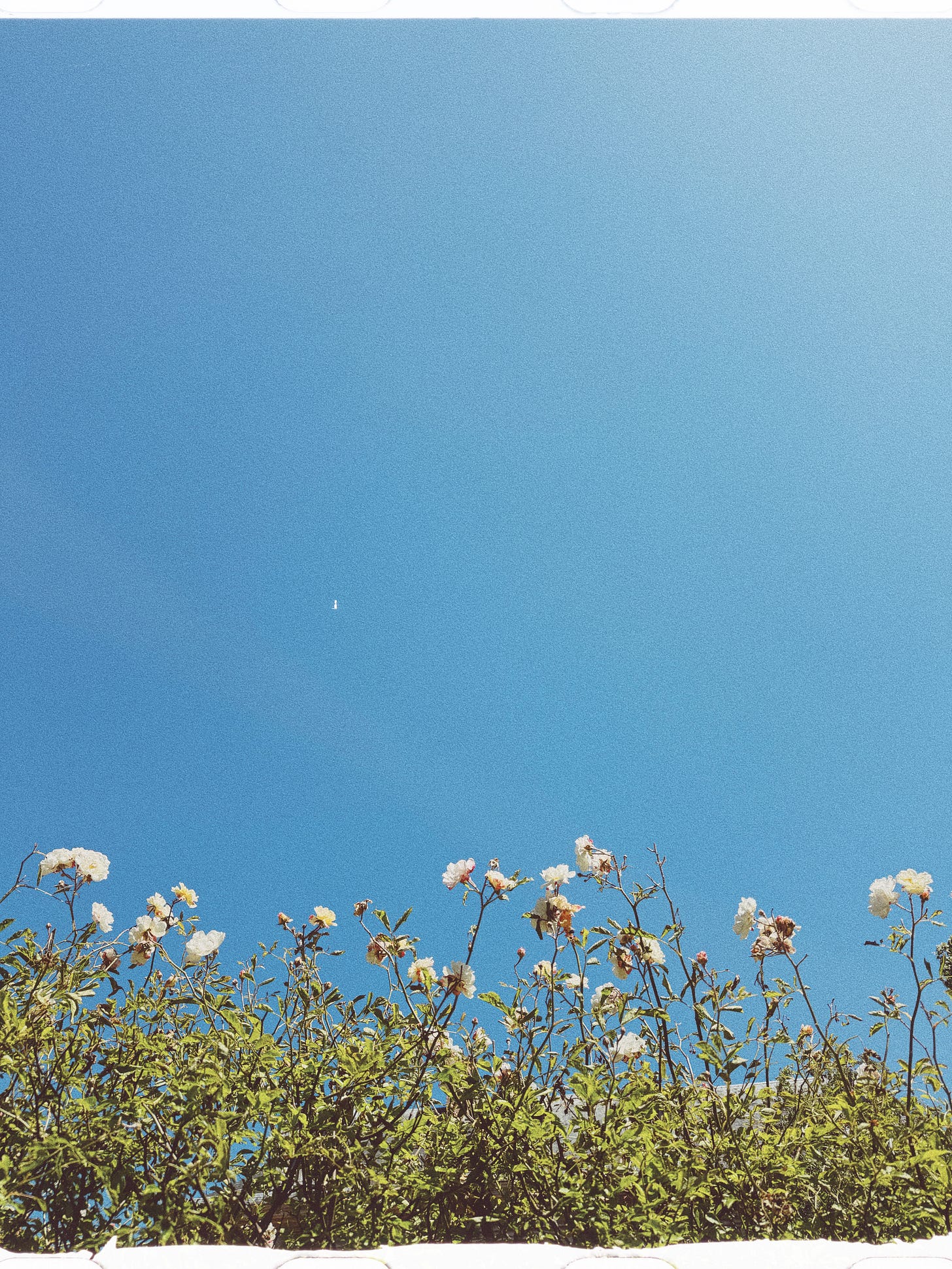A plane from Paris to JFK landed two weeks ago. It flew through the sun to travel back in time a day before. A body is back in New York. A mind is somewhere else.
I feel strange writing “I” because I don’t know where I left off and where I started. Where must I begin again?
The month of May drifted in a similar strain. It’s the end of June and the weather has finally matched the season without any warning. Two weeks ago I was buttoned in leather. Last week I tempted taking my top off. Then the heat wave finally broke. The other day, I actually said, “It’s cold.” Today, I did take my top off. V and I biked to the ocean.
I keep adding sentences and changing the tenses of days because they keep passing. “The other day” could be any of them.
I had bought that leather jacket at Les Puces in Saint-Ouen because I was freezing in what I had packed. It reminded me of my former lover except it was on me. I only buy things I need—many times without knowing I need them. Among these purchases was a pack of pens and a pair of shoes.
My pen died the morning after I met another lover. La dernière chose j’ai écrit était, “Mon stylo est mort,” and he laughed when he saw it in faded ink. He wrote his name in the new on the next page and we buried the old in a square of dead grass outside the only cafe open at sunrise after having coffee, croissants, and a tartine with butter and apricot jam. Then we said goodbye.
I’d bought a new pair of vintage Celine’s the same day that the heel on the Sam Edelman loafers I’d had for four years broke off after averaging 40k steps by sunset for the week. I threw the old pair in an empty metal trash can before I boarded a train to the airport.
So I came back to New York with new hands and new feet. These appendages I’m again learning how to master. How to walk in foreign skin.
I flew to Paris within a week’s notice because a professor who took me away for a weekend in the Catskills a year ago where I seriously considered murder for the first time in my life invited me on his tentative trip in May. He offered to pay for my flight and I considered it before I weighed the cost—nothing is ever for free. His offer was met by avoidance so I didn’t see it seriously, but it was a potential I wanted to be real. So I told everyone I would be in Paris in May until I was.
I have a habit of desiring men much older than me like I’ll somehow be cultivated into something more complete. Till this soil! Plow me!
But I’m always left. Empty without a tool. Hands are free. The best food is eaten without utensils. At least, that’s what the old man I had Michelin star sushi with in the Financial District a few weeks ago said. Or maybe he only ate food that he could eat with his hands. I don’t remember. I do remember how he used his hands to put me in his mouth later that night.
I flew myself to Paris because I didn’t need a man to. Just like I can make myself come best.
And I flew to Paris to heal a heartbreak I didn’t want to admit. I’m so much like Chet, but it never gets as far as love. I’m just so sensitive. I feel everything in extremes even if they’re not.
My roommate saw him last week walking into a deli carrying a bottle of screw-top red wine. Drunk. Disheveled. Her boyfriend thought he was homeless. Asked if he needed to step in on the interaction. I hate to say it almost felt good. Karma incites itself. Any action done in shame reaps itself twice over. If there are only two emotions: fear and love—I only want to know the latter. So I felt really bad for almost feeling good.
It’s just that all this love is still here. Where else am I supposed to put it?
People ask about my trip to Paris and all I can say is that it was perfect. They ask about what I did but I can’t remember. I just know I saw a lot of light and that I felt a lot of love. But what else can I say? I had my first steak in about two years before some of the best sex in the past 23.
That’s pretty much how it went.
Yet the idea for this essay keeps coming and going—a cloud I can’t catch. I’m too mesmerized in looking I can’t bring myself to act. Allergies metastasized to a sickness I can’t shake. And now it’s so hot all I can do is lay. I confess I’ve been feeling paralyzed. I say writing is breathing. A compulsion. I do it to prove to myself I’m alive. But I’ve felt so dead. The morning sucks me dry before I’ve even had my first sip.
I finally cut my nails overgrown in gel and returned to the nasty habit of biting them down to nubs. “The sacrifices you have to make to look good,” someone tells me when I complain after their compliment. I can’t use any keys!
This isn’t to say I haven’t been writing—technically.
Philip Guston said detours were helpful because you come back on track more intensely. V hosts a film screening and Cynthia Madansky shows a short based on Clarice’s Água Viva (1973), Viva Água (2016). V curated the film screening by Counter Collective based on texts adapted to screen—both made by women.
Cynthia tells the audience this series of poetic musings serves as breathing room for her to craft long political excavations, where she can be more free than responsible. Her current project focuses on the effects of nuclear power plants across all 50 states. She’s visiting every one of them. I wonder who she’s reading now. She tells us, but it’s a name I don’t recognize. I don’t remember. Maybe I will when I see it.
V told me about the screening and I was apprehensive about my attendance. I was on deadline. I needed to spend the night writing. But I rode my bike through Bed-Stuy anyway and it was so beautiful I almost sent a message to my Italian lover in Paris. I wrote it down instead.
And in the film I saw, I found my epigraph.
“When you see, the act of seeing has no form—what you see sometimes has form and sometimes doesn’t.
[…]
The true thought seems to have no author.”
Clarice Lispector, Água Viva
I’ve just finished that piece of which I’m immediately ashamed. Too afraid to be misread, I don’t want to be read. Is it better to be unknown than misunderstood? I can’t tell the difference. I don’t reread. I don’t know!
The only thing I knew I wanted to see in Paris was the Rodin Museum. It was recommended on a sunny day.
There are two books in my bedroom under my monstera I found on the side of the road in the Lower East Side. One is on Rodin. The other is on Rodin‘s hands. I pull them out frequently but not as often as I’d like.
When I saw La Musée Rodin in Paris, I was surprised by the scarcity of his studies on hands. And I wanted to see his drawings outside of my own bedroom! The closest I came to satisfaction was a painting titled Crucifixion (entre 1871-1877). Jesus is hung in a sky above penciled grid lines. A woman reaches out from the void, hands raised in worship. She pines to kiss his feet with grief.
Thieves don’t designate who’s who. The figure isn’t done.
Everything goes unfinished. I swear it’s not that I gave up.
I talk to a new boy who works at a store owned by a man with whom I had an affair for a time where I occasionally stop by to remember memory lane. High off clicking send and drunk off two glasses of wine, I speak from clouds I’ve just written from. Sometimes a stranger is a sage. You can only do so much.
Another stranger once sat at table 33 on a Friday afternoon reading a copy of Blau International. Rodin came up in conversation but I don’t remember why. Her professor, where she was auditing a few studio classes outside of her 9-5, had written about Rodin and his drawings in the issue she had in her hands. She gifted me her copy right from them before she left to get back to work. “I can just buy another one. I think you need this.”
She’s a sculptor. I’m fascinated by her fascination with knees.
And by Rodin’s breath in a medium other than something-stone.
Brandt Junceau, also a sculptor, writes about Rodin’s “secret museum” of drawings, one curated by and for himself of the most intimate caliber. He notoriously had models in his studio with instructions only to move in the nude. He sketched them in watercolor and pencil. But this library of work extended past a hidden amount—the Musée Rodin holds 7,000 drawings. I can’t help but wonder where they were.
Junceau describes “few occasions when Rodin had pencil, paper, and the sexe to himself, and had at last rendered it plainly, [where] we see him take his work back with his finger, stomp, and eraser. This as if the drawings would say with certainty only I was there…”1
Albert Elsen, a Rodin scholar, probed similar territory in a 1972 edition of Artforum: “Drawing was the expression of thought as he sought to understand life and make it understood. What stayed his line from frigidity was the reflection of the artist’s heart on the object he created.”2
Elsen outlines something I recognize in words I’ve recently written down. There is a space between perception and reconstruction. An artist looks at the model and then the page. “Memory functioned severally.” Instead, as Elsen says, Rodin found a way to draw continuously—“His superbly educated hand had to be retrained to become the reflex of the eye and feeling.”
Elsen writes that “Rodin won truth through the contours by imagining that the point of his pencil was actually probing the body’s edge.” He didn’t need to impose artificial movement to find Michelangelo’s drama in nature, but he had to naturalize Michelangelo, therefore finding nature for and as himself. “What separated Rodin from his conservative contemporaries,” Elsen writes, “was that he was able to transform his art before nature.”
Watercolor bleeds. Edges carve out a soul.
Rodin’s drawings show his hand more than his sculptures3 ever could.
The first piece of art I’d ever purchased—or even really exposed myself to—was a red folder of Rodin’s drawings from the thrift store down the street from my apartment when I was living in Jersey. At the time, I didn’t know his name. I didn’t even look inside. I just saw that it was $10 so I bought it. Many of these prints are still taped on the walls of my bedroom like they always have.
“It is very simple. The drawings are the key to my work”
—Auguste Rodin
I’ve recently started seeing a man who has the most impressive—as much as it is neurotic—book collection I think I’ve seen in the flesh. He overwhelms me in more ways than one. He laughs about being a bad reader but an excellent buyer. It’s true. The library is vast, beautiful, and organized in piles of thought. A “to-read” list breeds more boxes exponentially left unchecked. But good things come to those who wait. And I gain so much just from seeing the spines.
Two artists I’d previously written about made a metaphor of life as artists and creation being like an umbrella catching water. I’ve previously said I feel like I’m constantly trying to fit an ocean through a straw. I heard Björk say it first but I’ll continue to like its mine because it feels like it.
Ekin says I can join for drinks after a Rozier film at MOMA so long as I don’t talk too much. She thinks I talk too much. She thinks I talk too much when I’m “constipated in the writing” and she’s right.
This idea has been stuck inside of me for months. Its amorphous entity took up so much space in my mind. I’ve finally been able to scrape out a figure, but there are still all these loose parts left inside. I keep getting these migraines but I swear I’m drinking water.
No matter how much I rub my eyes there’s still crust in the creases. I’m trying to wake up but the dreams keep me away from consciousness. Debris cakes on itself (and what is it with this trend of art-as-cake/is-it-cake-or-not anyway?)
The work has only been able to seep out in small spurts like gas on a walk after a big meal. Hilton got me tickets to see Meshell Ndegeocello’s performance of No More Water: The Gospel of James Baldwin at Little Island and I had to run out halfway through to tend to my case of the runs. I don’t mean to be so grotesque I just can’t get out of this body.
All of this information is good for something. There’s so much space between a moment and its aftermath. There’s no such thing as a waste.
So who cares if I mention it now or later if it comes out one way or another—Fragmentary. I pick a book up when it tells me to.
“I remember standing on a street corner with the black painter Beauford Delaney down in the Village, waiting for the light to change, and he pointed down and said, “Look!” I looked and all I saw was water. And he said, “Look again,” which I did, and I saw oil on the water and the city reflected in the puddle. It was a great revelation to me. I can’t explain it. He taught me how to see, and how to trust what I saw. Painters have often taught writers how to see. And once you’ve had that experience, you see differently.”
—James Baldwin
Junceau, Brandt, “Auguste Rodin: The Secret Museum,” Blau International No. 11.
Elsen, Albert. “Drawing and the True Rodin,” Artforum. February 1972.
Many done by or with assistants.







🌊
WOW, a lot to unpack there…some is hard for me to read for one reason or another…❤️